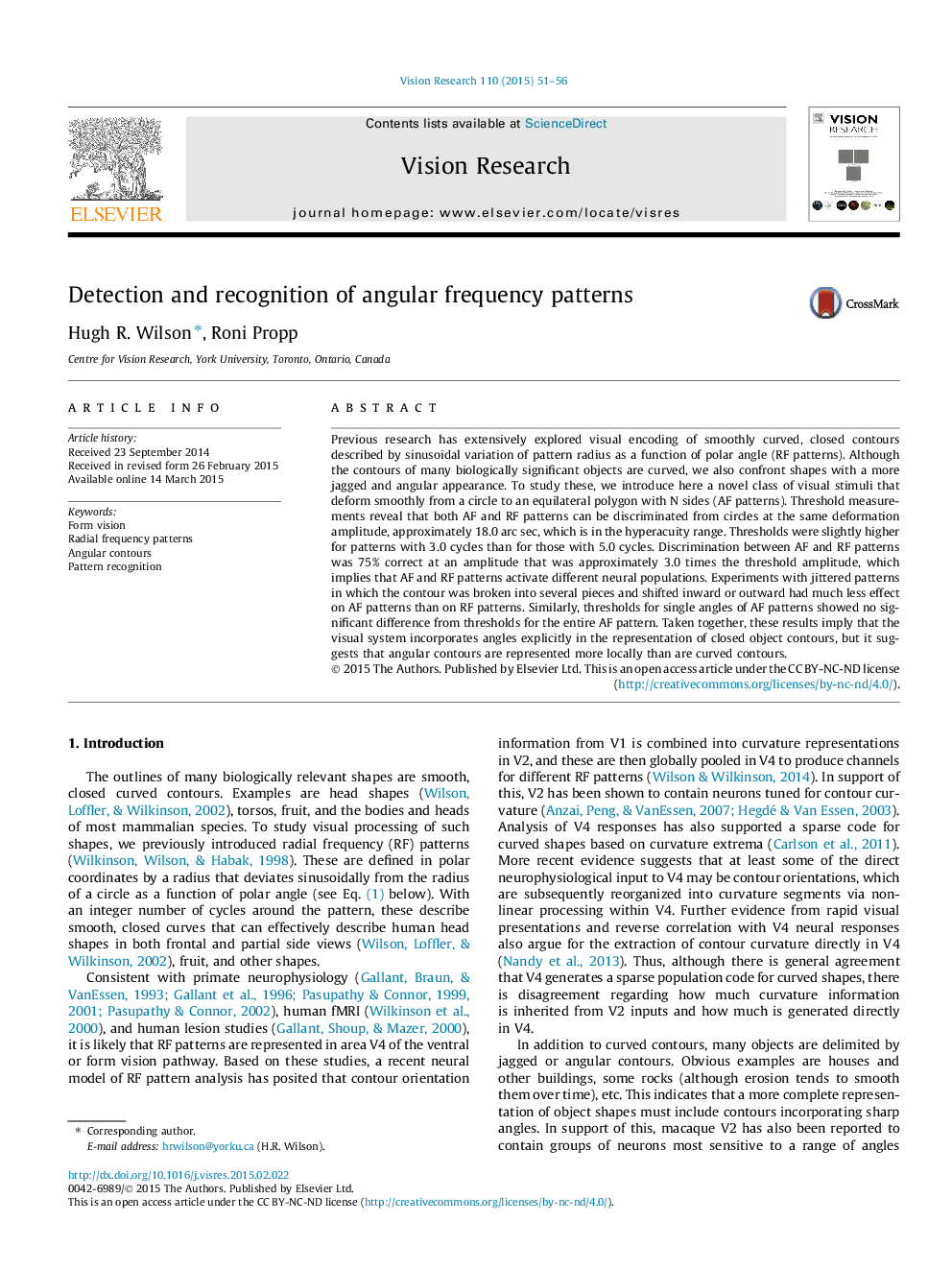| Article ID | Journal | Published Year | Pages | File Type |
|---|---|---|---|---|
| 6203220 | Vision Research | 2015 | 6 Pages |
â¢New class of patterns defined by angular deviations from a circle towards a polygon.â¢Thresholds for angular frequency (AF) patterns similar to radial-frequency patterns.â¢Angles in AF patterns processed locally.
Previous research has extensively explored visual encoding of smoothly curved, closed contours described by sinusoidal variation of pattern radius as a function of polar angle (RF patterns). Although the contours of many biologically significant objects are curved, we also confront shapes with a more jagged and angular appearance. To study these, we introduce here a novel class of visual stimuli that deform smoothly from a circle to an equilateral polygon with N sides (AF patterns). Threshold measurements reveal that both AF and RF patterns can be discriminated from circles at the same deformation amplitude, approximately 18.0 arc sec, which is in the hyperacuity range. Thresholds were slightly higher for patterns with 3.0 cycles than for those with 5.0 cycles. Discrimination between AF and RF patterns was 75% correct at an amplitude that was approximately 3.0 times the threshold amplitude, which implies that AF and RF patterns activate different neural populations. Experiments with jittered patterns in which the contour was broken into several pieces and shifted inward or outward had much less effect on AF patterns than on RF patterns. Similarly, thresholds for single angles of AF patterns showed no significant difference from thresholds for the entire AF pattern. Taken together, these results imply that the visual system incorporates angles explicitly in the representation of closed object contours, but it suggests that angular contours are represented more locally than are curved contours.
